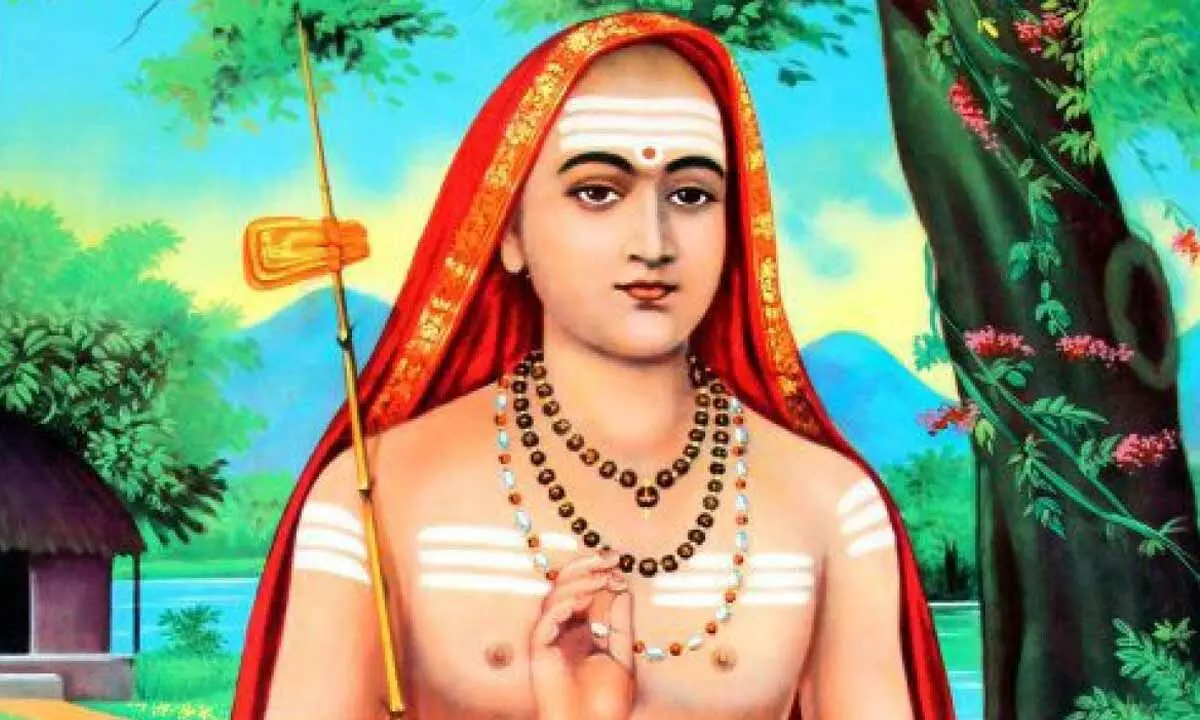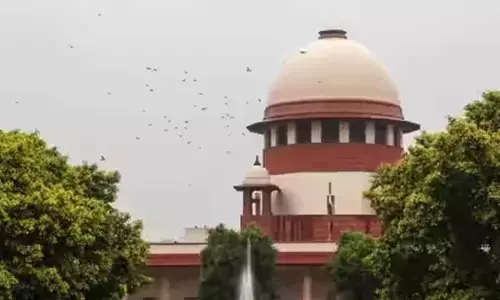Remembering Shankaracharya

Remembering Shankaracharya
Shankaracharya was known as the person who established six religions – ‘shanmata-sthapana-acharya’. Religion is mainly a belief system, as for instance, holding Vishnu as supreme, Shiva as Supreme, Durga as Supreme and so on. Imagine these groups fighting among themselves for supremacy
Perhaps one incident which is well known about Shankaracharya is about his meeting a chandala (treated as untouchable in those days) who was coming with his dogs on the streets of Kashi. The acharya is said to have asked him to step aside, and the chandala seems to have questioned whether the atman had to step aside or the body, which is a product of the five elements which are impermanent. The acharya is said to have realised his mistake and accepted the divinity in him. This resulted in the five famous verses known as 'Manisha Panchakam', where the acharya says, 'I accept an enlightened person, whether a chandala or a brahmin as my guru'. A wonderful and most relevant teaching for modern times.
What is not known about Shankaracharya is his contribution to social harmony. Born in Kerala, he travelled all over the Bharat varsha, went up to the Sharada peetha in Kashmir and had an intellectually brilliant exposure. In those days, the Upanishads were interpreted in different ways by different people to suit their interests. For instance, one group gave excessive importance to rituals and thought that philosophy was irrelevant. Many groups indulged in rituals which were almost barbaric. Some groups accepted the Upanishads but said that their god was the Supreme Reality proposed in the Upanishads. (We may note that even Zakir Naik says this). The acharya debated with all of them. It is recorded that there were about seventy odd traditions all over the country. Shankaracharya debated with several scholars and propounded the principle of oneness which is the central teaching of the Upanishads.
Debates in those days were honest and based on the principles of logic. Their goal was to arrive at the truth. The proponent of a doctrine would study the rival's doctrine thoroughly and raise his objection to it and propose his own understanding. Sometimes the bet was that the loser had to give up his doctrine and accept the doctrine of the winner. There was no problem about it because it had nothing to do with personal belief. It was merely a wrong understanding which he corrected. One such famous debate which we should all know about is the debate between Shankaracharya and an eminent ritualist named Mandana Mishra. The judge was the wife of Mandana Mishra who was also a great scholar. It was a victory to all, in the sense that Mandana was gracious to admit his defeat and accept the acharya's thought. The judge was so impartial that she held the opponent as the winner. Amartya Sen described this debating tradition in India in his book 'The Argumentative Indian'.
Shankaracharya was known as the person who established six religions – 'shanmata-sthapana-acharya'. Religion is mainly a belief system, as for instance, holding Vishnu as supreme, Shiva as Supreme, Durga as Supreme and so on. Imagine these groups fighting among themselves for supremacy. It is almost magical that Shankaracharya brought all the traditions within the umbrella of the Upanishads and allowed various groups to worship their own god while accepting the oneness of all other names and forms. He introduced a system called pancha-ayatana puja, in which every householder could keep five symbols of the deities and worship them equally. The family deity could be in the center. That is the reason we find that while the temple is that of Vishnu or Shiva or Ganesh, we find other four deities in the four corners around the main temple. This ensured tolerance and acceptance of all traditions. This, of course, got diluted after the 13th and 14th centuries in which the shiva and Vishnu traditions fought. This was due to the decline of the Upanishadic spirit and due to political reasons.
Shankaracharya's writings range from commentaries on the Gita, The Brahma-sutras and the Upanishads to innumerable independent works. His commentaries are known for his logical arguments. His openness about some of the ethical and epistemological aspects of Buddhism made his opponents call him a crypto-Buddhist.
Are we reading his books or are we merely worshipping him as one more avatar? The worst way to follow a master is to treat him as god and forget about his teaching. We find huge rituals, homams, Rudra-abhisheka, Chandi yaga etc., being organized to celebrate the birthday of Shankaracharya. This is precisely what he did not ask for himself. His observations on the reality of the universe, the relation between matter and the mind etc., are subjects which are hotly discussed in scientific circles. His philosophy would liberate any person from religious dogmas and fundamentalism.
Who can be more relevant for world peace than Shankaracharya?
(Shankara Jayanti falls on the 25th of this month)
(Writer is former DGP, Andhra Pradesh)













